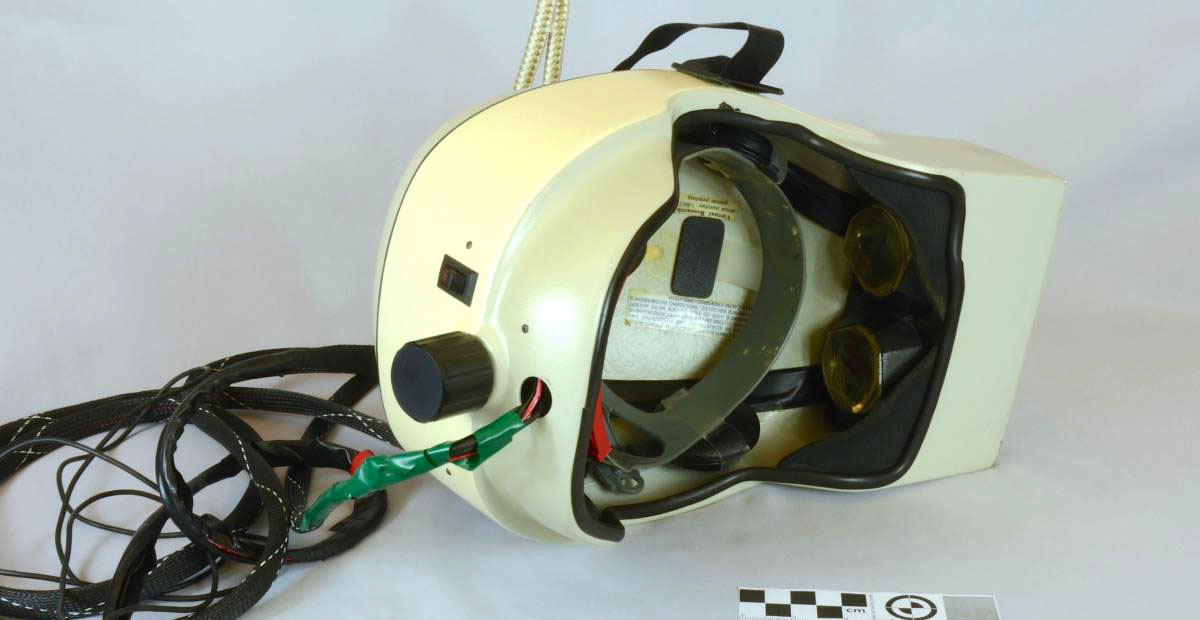By 1991, the FlightHelmet was the third HMD to feature Large Expanse Extra Perspective (LEEP) optics from Eric Howlett’s LEEP-VR. The Flight Helmet combined LEEP’s 100° field of view with an adjustable, comfortable and rugged packaging design. The use of a rear exiting cable as a counterweight made this HMD perfectly balanced.
LEEP optics were originally used in the mid 80’s by VPL Research to produce a custom (> $100,000) HMD for NASA. In 1989 VPL followed with their own product, the Eyephones which also integrated LEEP’s optics. LEEP followed a couple of years later with their own helmet, the CyberFace.
All these LEEP based helmets suffered from the same critical problem, the only color LCDs available were in small handheld consumer TVs. All three manufacturers simply stripped down these consumer TVs and integrated their guts into a head mounted display. The effect of spreading 240 horizontal pixels over a 100° field of view made each pixel seem like a floating football from the wearer’s perspective.
As second issue was that the LCDs were physically too wide to match anyone’s inter-pupilary spacing (the distance between your two eyes, about 55m-70mm.) Thus the graphics system supplying the images to each eye had to calculate images which did not completely overlap; or prisms were installed in both eyepieces to resolve the incorrect spacing.
Epson’s entry into the small LCD (1.3″) market in 1992-1993 ended the age of LEEP helmets.




